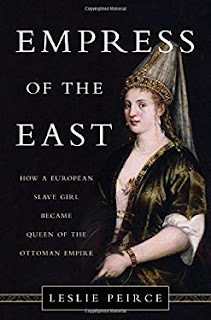There have been some beautiful days here, spring days, with glorious clouds and views over the ocean. I feel I've missed out on another season of whale watching, which can sometimes be done from shore, but that I would like to do from a boat and not just a one hour tourist go-see either but one lead by a scientist from the Cabrillo Aquarium. I also have not yet been to Catalina Island or any of the Channel Islands. I've been so inspired by a wonderful documentary called West of West to go there for a few days at least, but have not had the opportunity.
However, I was able to take my beloved senior dog to the only official dog beach in Southern California, which is called Rosie's Beach, in Long Beach California, not far from the Port of Los Angeles. I had wanted to take her there three years ago, before Covid closures, and finally we got to go! In that time, she has significantly aged, though she is not senile, she is old. It was our first time there and her first time on sand, wet sand, and so close to the briny water.
We had to walk a bit to get to the location, along a nice path though, and with a breeze. The sun was not too hot so the sand was cool. I'm aware that a dog's paws can be badly damaged by heat, such as on the sidewalk on a summer day. I took along her wheeled carrier to protect her from any damage and any overheat. She loves to sit in the carrier, with her little head up over the unzipped opening up top, and experience moving along because her days of actually walking or running this far are over. Trips like this help keep a dog's mind stimulated as it experiences different smells especially. Any time I get that carrier out, she heads for the door, signaling that she wants to go.
What a scene it was at Rosie's Dog Beach!
First, the view. Out on the ocean are oil derrick islands with palm trees which are permanent, and certainly an interesting way to sort of disguise the machinery. Not permanent, but there a long time, were a couple massive cruise ships that must have stopped voyaging a while back. There were wind surfers in action. And far down the way, a view of the port where the container ships come in and unload the box cars.
I wasn't prepared to actually go into the water myself, nor did I think my little 12-pounder would dash into the waves, but we walked where the sand was watery for a bit and she sniffed some sea-weed. Then I found a spot for us to sit. I held her in my arms as younger and bigger dogs who were fearless in the surf (they must be Long Beach natives) caught frisbees and sticks, ran in packs, and seemed to be all smiling and happy. A light brown mini-poodle, male, came around to admire my dog, with a shy grin on his face - I swear. My dog used to have all variety of male dogs after her, including two incidents where I swear a dog fell in love with her at first sight, so I teased her that, though she is old, she is still beautiful. I held my dog in my arms and who knows how much she could actually see, since she has one cataract that is fairly opaque and another one that is starting, but I do think she knew she was watching other dogs, a lot of dogs, bigger dogs, because she could at least detect movement and smell them. I felt her little heart pounding in her chest with excitement. And I saw her smile too, something she used to do all the time, but less often these days. So I was so glad I had made this effort.
When I set her down in the sand, she did a peculiar thing. She circled me and her carrier over and over again, within a few feet of us. It seemed to me that she was getting a feel for the sensation of sand underfoot. We had gone to a beach before where you can take dogs on the grass near the sand but not the sand or in the water, and I know that she likes to scare birds so they'll fly away, but I think this was her first experience of sand.
Then she paused to see if the sand was diggable like dirt at a dog park, and how so. She made a small hole in the sand and sniffed it.
Finally, she did find a place on the sand to lay, with her attention towards the ocean.
Finally I put her back into her carrier and we went back up the path, stopping under a shady tree where there was green grass.
I enjoyed watching the owners of the other dogs at the beach there too. It was clear some of them were regulars. How lucky they are to be able to go there and walk with their dogs frequently.
When I asked around before going, I heard that sometimes there are dog fights and dog bites and incidents, but we did just fine. We were there for maybe a half hour.
I do hope we can go back again before the summer heat makes it not practical for us.
C 2022 Magyar-American BlogSpot




